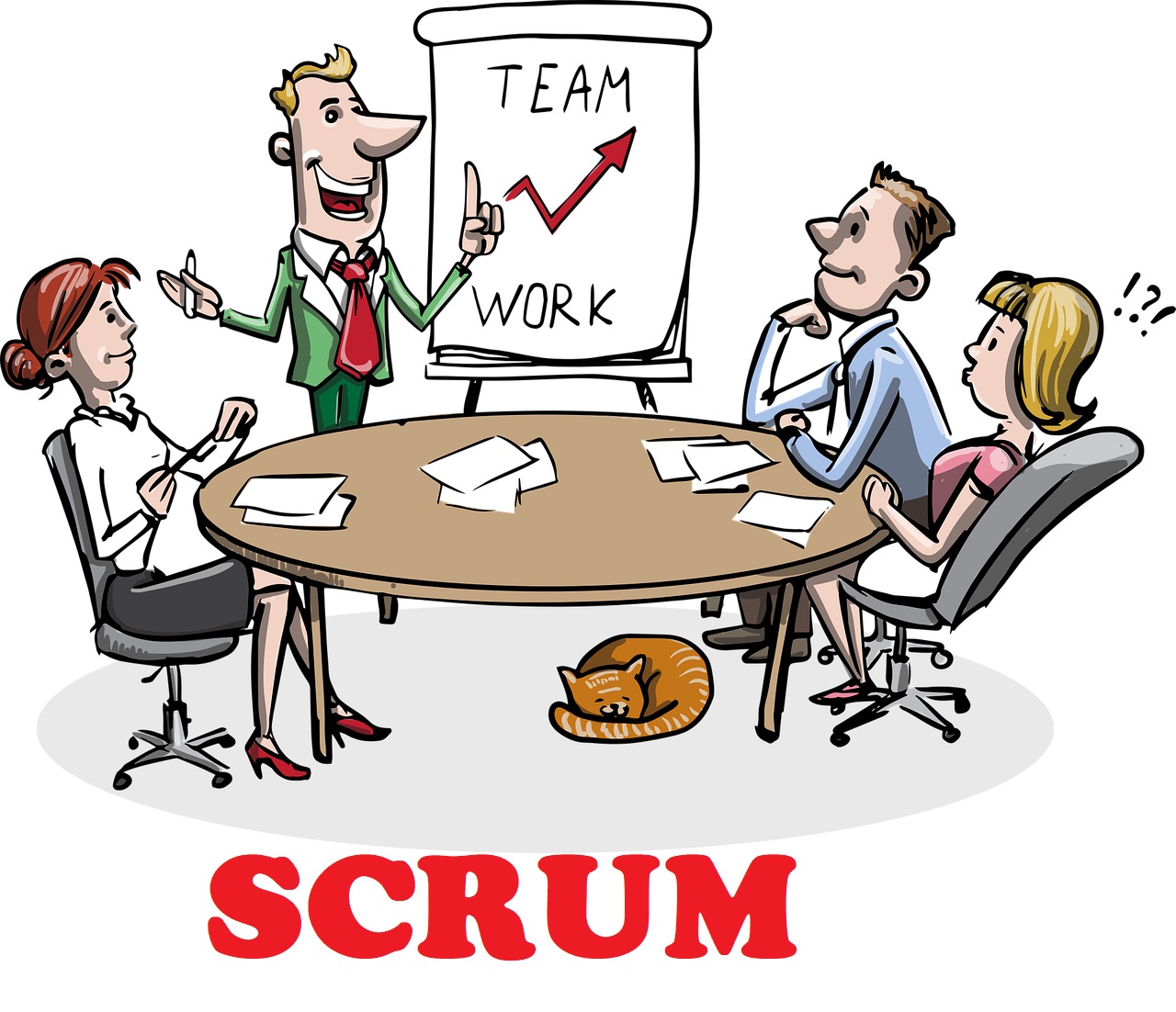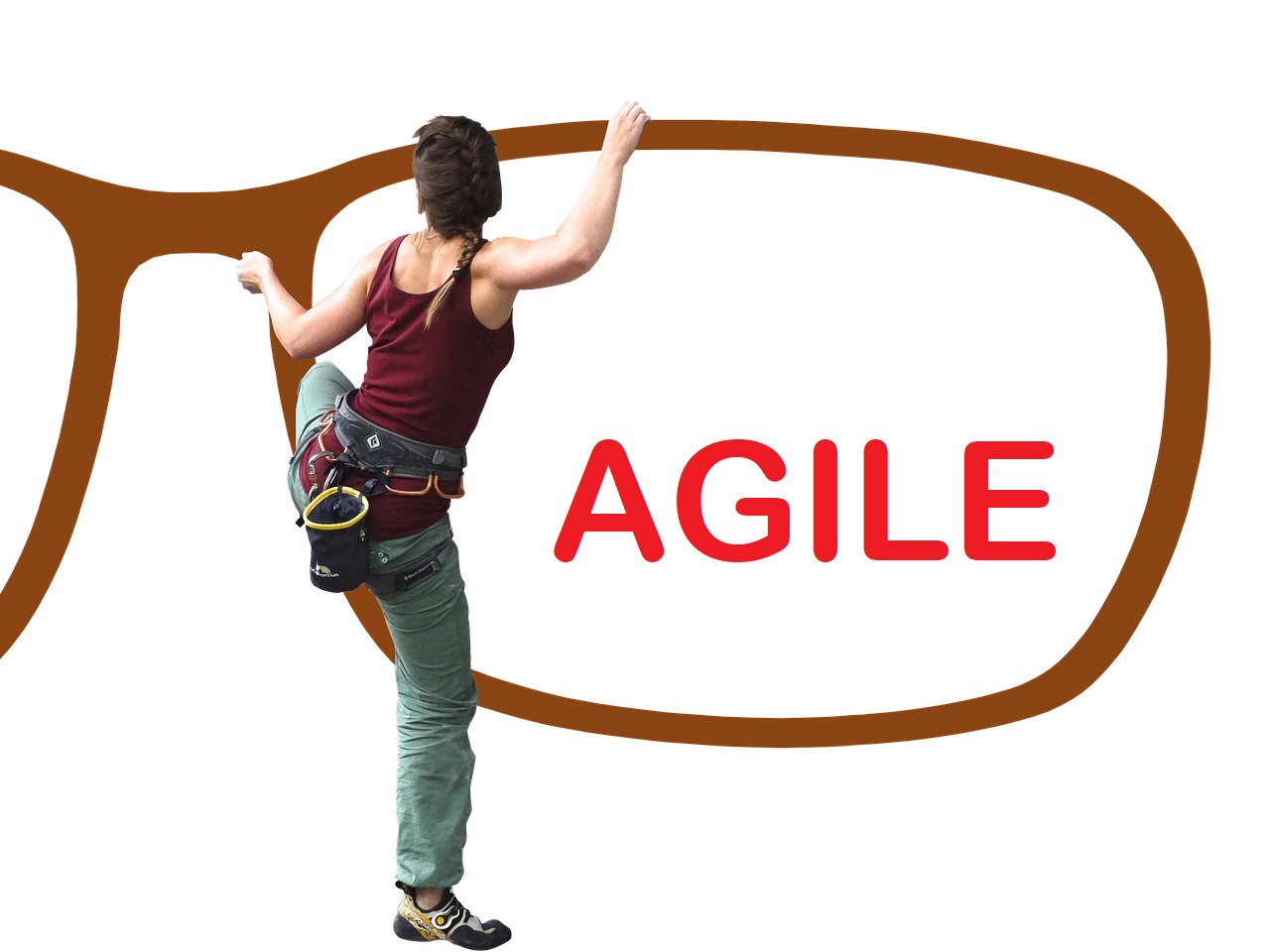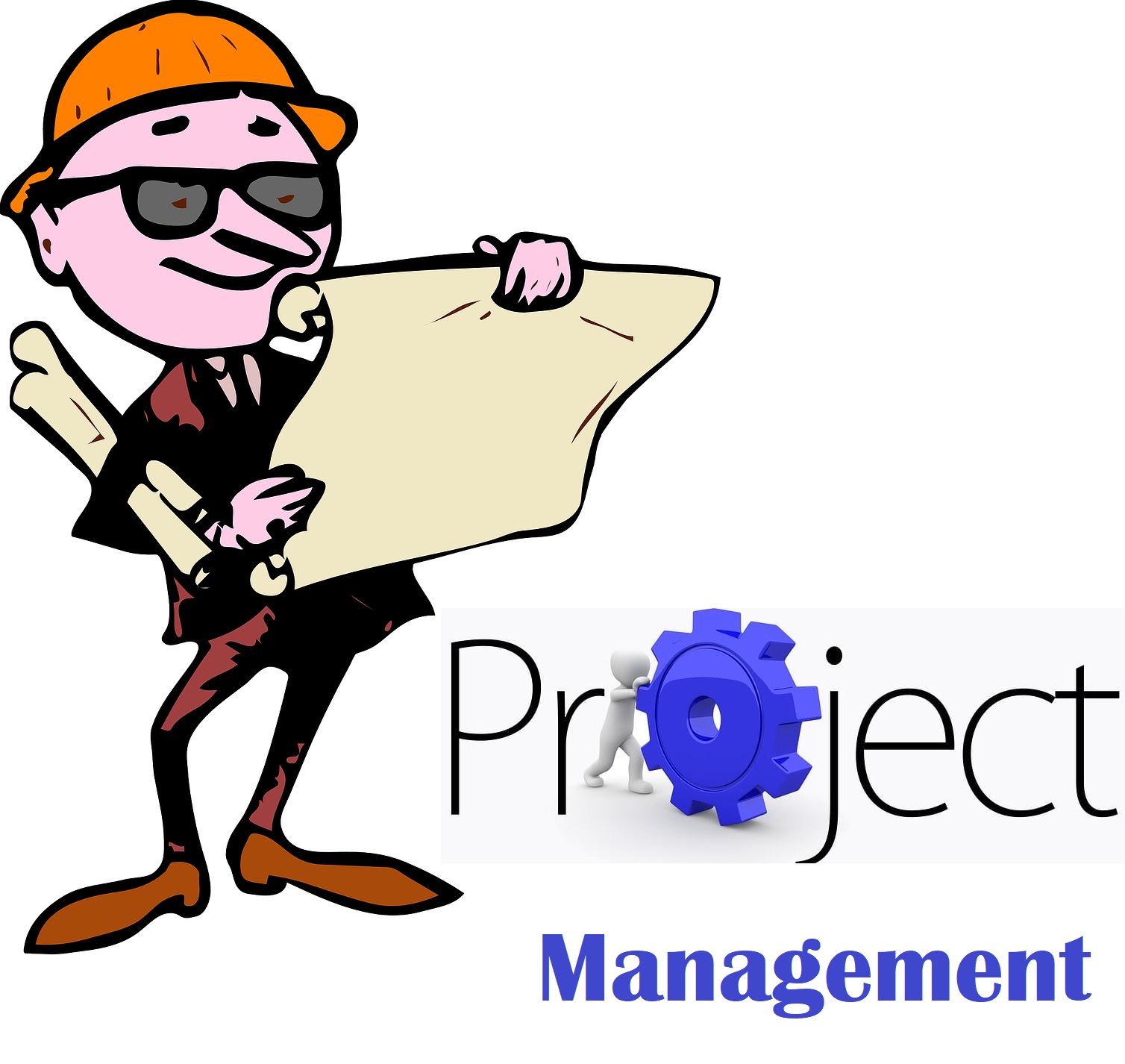3 Essential Tools for Cultivating Happiness

Here are three tools that can contribute to your happiness:
Mindfulness and Meditation Apps:
There are numerous apps available that can guide you through mindfulness and meditation practices. Apps like Headspace, Calm, and Insight Timer offer guided meditation sessions, breathing exercises, and techniques to help you stay present and reduce stress.
Regular mindfulness and meditation can enhance your overall sense of well-being and happiness.
Gratitude Journal Apps:
Keeping a digital gratitude journal can be a powerful tool for increasing happiness. Apps like Five Minute Journal, Grateful: A Gratitude Journal, and Day One allow you to easily record things you’re thankful for each day.
These apps can help you cultivate a positive mindset and appreciate the positive aspects of your life.
Positive Psychology Tools:
Positive psychology focuses on promoting well-being and happiness. Tools like the VIA Character Strengths Survey can help you identify your strengths and values, allowing you to align your life with what truly makes you happy.
Additionally, resources like the “Happify” app offer science-based activities and games designed to boost your mood and increase overall happiness.
These tools can be valuable aids on your journey to happiness, but remember that happiness is a complex and individual experience. It may require a combination of tools and practices that work best for you.
Pranab Hazarika
** None of the above-mentioned apps are part of sponsorship.
Unveiling the Mysteries: The 7 Hermetic Principles

The 7 Hermetic Principles from “The Kybalion“:
“The Kybalion” explores the teachings of Hermes Trismegistus, an ancient sage. It centers around the seven Hermetic principles, or Universal laws, that govern the universe.
1. Mentalism:
- This principle asserts that the universe is fundamentally mental in nature. Everything originates from and exists within the realm of the mind.
- It emphasizes the power of thought and the idea that our thoughts create our reality. Positive, focused thoughts lead to positive outcomes.
- Mentalism teaches that understanding the workings of the mind is crucial for achieving personal growth and mastery over one’s life.
2. Correspondence:
- “As above, so below; as below, so above” encapsulates this principle. It means that there is a correspondence or similarity between the macrocosm (the larger universe) and the microcosm (the smaller universe, such as an individual).
- Understanding this principle allows us to see patterns and connections between seemingly unrelated phenomena. It promotes holistic thinking and the idea that the universe operates according to consistent laws.
3. Vibration:
- The Vibration principle asserts that everything is in a constant state of motion and vibration, even if it’s not apparent to our senses.
- Each object, thought, and emotion has its own unique vibrational frequency. Understanding and harmonizing with these frequencies can lead to mastery over one’s experiences and surroundings.
- This principle underlines the idea that energy and matter are interconnected and mutable.
4. Polarity:
- Polarity teaches that everything has two opposite poles, or aspects. These opposites are merely extremes of the same thing.
- Understanding polarities helps find balance and harmony in life. For instance, good and bad are not entirely separate; they are two ends of a spectrum.
- Mastery over polarities involves transcending extreme positions and finding the middle path.
5. Rhythm:
- The Rhythm Principle emphasizes the cyclical nature of everything. Life has its ups and downs, and there are patterns and rhythms to these changes.
- Awareness of these rhythms allows one to make more informed decisions and adapt to life’s fluctuations.
- By aligning one’s actions with natural rhythms, individuals can enhance their effectiveness and well-being.
6. Cause and Effect:
- Cause and Effect states that every cause has an effect, and every effect has a cause. There are no random events in the universe; everything happens for a reason.
- Understanding this principle empowers individuals to take responsibility for their actions and choices.
- By consciously choosing causes, one can predict and control their effects, leading to more intentional and purposeful living.
7. Gender:
- In this context, gender doesn’t refer solely to male and female but to the masculine and feminine principles present in all things.
- Balancing these principles within oneself leads to greater harmony and wholeness. It’s about integrating qualities like action and receptivity, strength and gentleness.
- Recognizing and embracing both aspects of gender can enhance personal growth and relationships.
These Hermetic Principles offer profound insights into the nature of reality and personal transformation. They provide a framework for understanding the universe and offer practical guidance for achieving greater wisdom and mastery over one’s life.
If You still want to deep dive into these 7 principles, you will find them here.


The Intricate Dance of Time, Light, and Mass: Unraveling Einstein’s E=mc2

In the vast realm of physics, few equations are as iconic as Einstein’s E=mc^2. At its core, this equation binds the concepts of energy, mass, and the speed of light in a profound relationship that has reshaped our understanding of the universe. Let’s embark on a journey to understand the intricate dance between time, the speed of light, and mass, all through the lens of this legendary equation.
1. The Essence of E=mc^2:
-E: Represents energy, a measure of the ability to do work or cause change.
– m: Stands for mass, the amount of matter in an object.
– c: Denotes the speed of light in a vacuum, approximately 3*10^8 meters per second. When squared, this value becomes an incredibly large number, emphasizing the immense energy contained within even a small amount of mass.
2. The Speed of Light as a Cosmic Speed Limit:
The speed of light isn’t just another number; it’s a fundamental constant of nature. According to Einstein’s theory of relativity, nothing can travel faster than light. This isn’t merely about photons zipping through space; it’s a statement about the very fabric of spacetime. As objects with mass accelerate closer to the speed of light, they require more energy, and their effective mass increases, making it impossible to ever reach or surpass this cosmic speed limit.
3. Time Dilation: When Time Slows Down:
One of the most mind-bending consequences of relativity is time dilation. As an object’s speed approaches the speed of light, time for that object appears to slow down relative to a stationary observer. This isn’t a mere illusion; it’s a fundamental aspect of how time and speed intertwine in our universe. Imagine a clock on a spaceship traveling near the speed of light. To an observer on Earth, the clock would appear to tick more slowly than one on our planet.
4. Mass and Energy: Two Sides of the Same Coin:
E=mc^2 tells us that mass and energy are interchangeable. This concept is vividly demonstrated in nuclear reactions, where tiny amounts of mass are converted into vast amounts of energy. The sun, for instance, powers itself by converting hydrogen into helium, releasing energy in the process. This energy, derived from a minuscule loss of mass, is what lights up our skies and warms our planet.
5. Implications for the Modern World:
The relationship between mass, energy, and the speed of light isn’t just theoretical. It has practical implications. Nuclear power plants, for example, harness the energy released from the conversion of mass based on E=mc^2. Similarly, our understanding of the equation has paved the way for advancements in particle physics, leading to innovations like the Large Hadron Collider.
Conclusion:
Einstein’s E=mc^2 is more than just an equation; it’s a story. A story of a universe where time, light, and mass are intricately connected in a cosmic dance. As we continue to explore the depths of our universe, this relationship will undoubtedly guide us, challenging our perceptions and expanding our understanding of the cosmos.
For those keen on delving deeper into this topic, I’d recommend reading “Relativity: The Special and the General Theory” by Albert Einstein himself. It provides a comprehensive yet accessible exploration of these concepts.
References:
– Einstein, A. Relativity: The Special and the General Theory.
– Feynman, R. P. (2011). Six not-so-easy pieces: Einstein’s relativity, symmetry, and space-time.
https://amzn.to/3Kvr7Qw
Pranab Hazarika

Accelerating Success: The Rapid Growth of SCRUM in Project Management Strategies

Introduction:
In today’s fast-paced business environment, organizations are constantly striving to improve their project management methodologies to ensure efficient and successful project delivery. Among various approaches, Scrum has emerged as a popular and widely adopted framework that embraces the principles of agility. With its iterative and incremental nature, Scrum empowers teams to adapt, collaborate, and deliver value consistently. In this article, we will explore Scrum project management in depth, examining its core principles, roles, ceremonies, and benefits.
1. The Essence of Scrum:
Scrum is an agile framework that promotes flexibility, collaboration, and continuous improvement. Its core values are transparency, inspection, and adaptation. The framework is based on empirical process control, enabling teams to respond quickly to changing requirements and market conditions. Scrum divides the project into short iterations called sprints, allowing incremental development and frequent inspection of the product.
2. Key Roles in Scrum:
Scrum defines three primary roles that are essential for project success:
a. Scrum Master: The Scrum Master is the servant-leader of the team. Their primary responsibility is to ensure that the Scrum framework is understood and followed. They remove any impediments, facilitate collaboration, and protect the team from external interruptions.
b. Product Owner: The Product Owner represents the stakeholders and is responsible for maximizing the value delivered by the team. They prioritize the product backlog, define user stories, and ensure a clear understanding of the project vision.
c. Development Team: The Development Team is a self-organizing and cross-functional group responsible for delivering a potentially shippable product increment at the end of each sprint. They collaborate, estimate tasks, and continuously improve their work processes.
3. Scrum Ceremonies:
Scrum introduces a set of ceremonies to facilitate communication, collaboration, and progress tracking within the team:
a. Sprint Planning: At the beginning of each sprint, the team conducts a planning session to determine the sprint goal and define the tasks required to achieve it. The Product Owner presents the prioritized product backlog, and the team selects the items they commit to completing during the sprint.
b. Daily Scrum: The Daily Scrum is a short daily meeting where the team synchronizes their work. Each team member answers three questions: What did I accomplish since the last Daily Scrum? What am I planning to do next? Are there any impediments blocking my progress?
c. Sprint Review: At the end of each sprint, the team presents the completed work to the stakeholders, collects feedback, and discusses any changes or new requirements. The Product Owner reviews the progress against the sprint goal and adjusts the product backlog as necessary.
d. Sprint Retrospective: The Sprint Retrospective is a reflection meeting where the team discusses what went well, what could be improved, and defines action items for the next sprint. It promotes continuous learning and process optimization.
4. Artifacts in Scrum:
Scrum introduces several artifacts to support project transparency and facilitate effective collaboration:
a. Product Backlog: The Product Backlog is a prioritized list of user stories, features, and enhancements that constitute the project requirements. The Product Owner manages and continuously refines the backlog, ensuring it reflects the evolving needs of the stakeholders.
b. Sprint Backlog: The Sprint Backlog is a subset of the Product Backlog items selected for the current sprint. It defines the tasks required to deliver the sprint goal and is owned by the Development Team.
c. Increment: The Increment represents the sum of all completed and potentially shippable Product Backlog items at the end of each sprint. It must meet the Definition of Done (DoD) and should provide tangible value to the stakeholders.
5. Benefits of Scrum:
Implementing Scrum project management offers numerous advantages to organizations, teams, and stakeholders:
a. Flexibility and Adaptability: Scrum embraces change and provides a flexible approach to project management. The iterative nature of sprints allows teams to adjust priorities, incorporate feedback, and adapt to evolving requirements. This enables faster response times and ensures that the product remains aligned with customer needs and market demands.
b. Increased Collaboration: Scrum promotes a collaborative environment where all team members work together towards a common goal. The self-organizing nature of the Development Team fosters a sense of ownership and accountability, encouraging creativity and innovation. Daily Scrum meetings facilitate communication and transparency, enabling better coordination and problem-solving.
c. Continuous Value Delivery: With Scrum, value is delivered incrementally at the end of each sprint. This allows stakeholders to see tangible progress and provide feedback early in the project. By focusing on delivering a potentially shippable product increment, Scrum ensures that the most valuable features are prioritized and delivered first, maximizing ROI and customer satisfaction.
d. Transparency and Visibility: Scrum emphasizes transparency throughout the project lifecycle. The Product Backlog, Sprint Backlog, and Sprint Burndown Chart provide clear visibility into project progress, tasks, and timelines. This transparency enables stakeholders to have a real-time understanding of the project’s status, fosters trust, and facilitates effective decision-making.
e. Continuous Improvement: The Sprint Retrospective is a key Scrum ceremony dedicated to reflecting on the team’s performance and identifying areas for improvement. By regularly inspecting their processes and adapting accordingly, teams can continuously enhance their productivity, efficiency, and product quality. This focus on continuous improvement helps create a culture of learning and innovation within the organization.
f. Early Risk Identification: Scrum’s iterative approach allows for early identification of risks and issues. With short sprints, teams can quickly identify and address challenges, minimizing the impact on the overall project. Regular feedback loops and frequent inspections enable proactive risk management, ensuring that potential problems are mitigated in a timely manner.
g. Predictable and Reliable Delivery: Scrum’s emphasis on regular sprints and incremental development leads to a more predictable and reliable delivery process. Through the use of time-boxed sprints and the commitment-based approach, teams can accurately forecast their capacity and commit to achievable goals. This predictability enables better planning, resource allocation, and stakeholder management.
Conclusion:
Scrum project management has gained widespread popularity for its ability to foster flexibility, collaboration, and value delivery. By embracing Scrum’s core principles, implementing its defined roles, ceremonies, and artifacts, organizations can achieve enhanced productivity, improved customer satisfaction, and a competitive edge in the market. The iterative and adaptive nature of Scrum empowers teams to respond swiftly to changing requirements, leading to successful project outcomes. As businesses continue to navigate the complexities of the modern landscape, Scrum remains a powerful and effective framework for managing projects and driving innovation.
To read about Agile Methodologies and Project Management check the links below:


Pranab Hazarika
BE |MBA|PMP| IoT


Agile Methodology: Driving Efficiency and Adaptability in Project Management

In today’s rapidly evolving business landscape, organizations face increasing pressure to deliver projects efficiently, adapt to changing requirements, and maximize customer satisfaction. Traditional project management approaches often struggle to meet these demands, leading to delays, scope creep, and reduced overall project success. To overcome these challenges, many organizations have turned to Agile Methodology, a dynamic and iterative approach to project management that emphasizes collaboration, flexibility, and continuous improvement.
What is Agile Methodology?
Agile Methodology is a project management framework that originated in the software development industry but has since gained popularity across various domains. It is based on the Agile Manifesto, a set of values and principles that prioritize individuals and interactions, working software, customer collaboration, and responding to change over rigid processes and documentation.
Unlike traditional project management methods, which typically follow a linear and sequential approach, Agile embraces change and promotes iterative development and delivery. It allows teams to break down large projects into smaller, manageable increments known as “sprints” and encourages continuous feedback and adaptation throughout the project lifecycle.
Key Principles of Agile Methodology:
- Iterative and Incremental Development:
Agile projects are divided into short iterations, typically lasting two to four weeks, where cross-functional teams work on a specific set of features or functionalities. Each iteration results in a potentially shippable product increment, allowing for continuous feedback and course correction.
- Collaboration and Self-Organizing Teams:
Agile encourages close collaboration among team members, stakeholders, and customers. Self-organizing teams are empowered to make decisions, take ownership of their work, and adapt to changing requirements, fostering a sense of ownership and accountability.
- Customer-Centric Approach:
Agile places significant emphasis on involving the customer throughout the project. By regularly engaging with customers, gathering feedback, and incorporating it into subsequent iterations, Agile ensures that the final product meets their evolving needs and expectations.
- Adaptive Planning:
Agile projects embrace change and recognize that requirements often evolve as the project progresses. Rather than attempting to predict and plan for every detail upfront, Agile teams maintain a flexible mindset, adjusting plans and priorities based on feedback and new insights.
- Continuous Improvement:
Agile promotes a culture of learning and continuous improvement. Through retrospectives at the end of each iteration, teams reflect on their processes, identify areas for improvement, and implement changes to enhance future performance.
Benefits of Agile Methodology:
1. Enhanced Flexibility: Agile allows for rapid adaptation to changing market conditions, customer needs, and project requirements. By breaking projects into small, manageable chunks, teams can quickly respond to feedback, reducing the risk of delivering a product that does not align with customer expectations.
2. Increased Transparency: Agile promotes transparency and visibility into the project’s progress. Regular meetings, such as daily stand-ups and sprint reviews, keep stakeholders informed about the project’s status, enabling them to provide timely feedback and make informed decisions.
3. Improved Quality: Through continuous testing, integration, and customer feedback, Agile teams can detect and address issues early in the development process. This results in higher-quality deliverables and reduced rework, ultimately enhancing customer satisfaction.
4. Higher Stakeholder Engagement: Agile encourages active involvement from stakeholders throughout the project. By engaging customers, end-users, and other relevant parties in regular feedback loops, Agile ensures that their voices are heard and their needs are met, fostering stronger relationships and increased satisfaction.
5. Faster Time-to-Market: The iterative nature of Agile allows teams to deliver working increments of the product at the end of each iteration. This enables organizations to release valuable features to the market earlier, gaining a competitive edge and generating revenue sooner.
Challenges of Agile Methodology:
1. Resistance to Change: Adopting Agile often requires a significant cultural shift within an organization. Resistance to change from team members, stakeholders, or even management can impede the successful implementation of Agile practices. Some individuals may be accustomed to traditional project management approaches and may struggle to adapt to the more collaborative and iterative nature of Agile.
2. Lack of Experience and Knowledge: Agile requires a solid understanding of its principles, frameworks, and methodologies. Inexperienced teams or project managers who are unfamiliar with Agile practices may struggle to effectively implement and execute Agile projects. Adequate training, mentoring, and support are essential to overcome this challenge.
3. Scope Creep and Unclear Requirements: Agile embraces change, but it must be managed effectively. Without a clear understanding of project requirements or proper control over scope creep, Agile projects can become disorganized and lose focus. It is crucial to establish a balance between flexibility and maintaining project goals and objectives.
4. Team Collaboration and Communication: Agile relies heavily on effective teamwork, collaboration, and communication. If team members lack the necessary skills or if there are communication gaps between team members, stakeholders, or customers, it can hinder the project’s progress. Regular communication, clear roles and responsibilities, and fostering a collaborative work environment are vital to address this challenge.
5. Scalability and Distributed Teams: Agile methodologies are typically designed for small to medium-sized teams. Scaling Agile practices to larger projects or organizations can be complex. Additionally, when teams are geographically distributed, coordinating and maintaining effective collaboration becomes more challenging. Adopting appropriate scaling frameworks and leveraging technology to support remote collaboration can help mitigate these challenges.
6. Lack of Predictability: Agile projects prioritize adaptability, which can make it difficult to predict project timelines and outcomes. While this flexibility is beneficial, it can create challenges in terms of resource planning, budgeting, and stakeholder expectations. Regular communication, transparent reporting, and setting realistic expectations can help address this challenge.
7. Continuous Client Involvement: Agile projects require ongoing customer involvement and feedback. However, securing dedicated customer involvement throughout the project can be challenging, especially if they have other competing priorities or limited availability. Project managers must actively engage customers and stakeholders, ensuring their participation and commitment to the Agile process.
Overcoming Agile Challenges:
Addressing the challenges associated with Agile Methodology requires a proactive and holistic approach. Here are some strategies to overcome these challenges:
1. Comprehensive Agile Training: Provide thorough training and education to team members, stakeholders, and project managers on Agile principles, practices, and frameworks. This will help ensure a common understanding and alignment towards Agile goals.
2. Strong Leadership and Change Management: Effective leadership and change management are crucial to drive the cultural shift necessary for Agile adoption. Leaders must communicate the benefits of Agile, address concerns, and actively support and promote Agile practices within the organization.
3. Clear Communication Channels: Establish open lines of communication and encourage regular and transparent communication among team members, stakeholders, and customers. This will help manage expectations, resolve issues promptly, and foster collaboration.
4. Agile Project Governance: Implement proper governance mechanisms to maintain control over project scope, budget, and timelines. This includes prioritizing and managing requirements, conducting regular retrospectives, and adapting the project plan as needed.
5. Agile Tools and Technology: Leverage Agile project management tools and technology to support collaboration, communication, and tracking progress. These tools can enhance transparency, automate processes, and facilitate distributed team collaboration.
6. Continuous Learning and Improvement: Foster a culture of continuous learning and improvement within the Agile teams. Encourage regular retrospectives to reflect on project performance, identify areas for improvement, and implement changes to enhance Agile practices.
Agile Methodology, despite its challenges, offers significant benefits for project management. By acknowledging and addressing these challenges proactively.


Pranab Hazarika
BE | MBA | PMP |IoT


PMP Made Simple: Mastering PMP Process Groups

Your Key to Project Management Proficiency
Project Management Professionals (PMPs) play a crucial role in ensuring the successful execution of projects across various industries. One of the key components that project management methodology is the utilization of process groups. In this article, we will explore the five process groups of PMP and will see ho
w these groups contribute to project success.
The Five Process Groups of PMP
To effectively navigate the world of project management, it is essential to understand the five process groups defined by the Project Management Institute (PMI). These process groups present a systematic approach to project execution and are as follows:
1. Initiating Process Group
The initiating process group marks the beginning of a project. It involves defining and aligning project goals with organizational objectives, identifying key stakeholders, and outlining the overall project scope. During this phase, project managers lay the foundation for project success and gain approval to proceed with the project.
- Key activities within the Initiating Process Group may include:
- Conducting a feasibility study to assess project viability.
- Identifying project stakeholders and their expectations.
- Defining the high-level scope and deliverables.
2. Planning Process Group
The planning process group focuses on developing detailed plans to accomplish project objectives effectively. It involves creating comprehensive project management plans, defining project strategies, identifying potential risks, and forming a solid project team. Successful planning sets the stage for smooth project execution.
- Key activities within the Planning Process Group may include:
- Defining a detailed project schedule and assigning responsibilities.
- Conducting risk analysis and developing a risk management plan.
- Preparing a comprehensive cost estimation and budget plan.
3. Executing Process Group
Once the planning process is complete, the executing process group comes into play. This group involves the actual implementation of the project plan and coordination of resources. It requires effective communication, collaboration, and monitoring to ensure that project deliverables are met.
- Key activities within the Executing Process Group may include:
- Procuring necessary resources and managing their utilization.
- Assigning tasks and responsibilities to team members.
- Monitoring project progress and managing any necessary changes.
4. Monitoring and Controlling Process Group
Monitoring and controlling are integral parts of the project management process. This group focuses on comparing actual project performance against planned objectives, identifying deviations, and taking corrective measures to keep the project on track. It helps project managers address any unforeseen challenges promptly.
- Key activities within the Monitoring and Controlling Process Group may include:
- Monitoring project risks and implementing risk response strategies.
- Analyzing project variance and initiating corrective actions.
- Managing change requests and assessing their impact on the project.
5. Closing Process Group
The closing process group concludes the project and ensures its successful completion. It involves formalizing project endings, validating the deliverables, and conducting a thorough project review. Closing processes contribute to capturing lessons learned and ensuring proper project closure.
- Key activities within the Closing Process Group may include:
- Obtaining formal acceptance of project deliverables from stakeholders.
- Conducting a final project review and documenting lessons learned.
- Archiving project documentation and resources for future reference.
Conclusion
Embracing these process groups in project execution can unleash your inner PMP, enabling you to drive projects towards accomplishment with confidence and efficiency.


Pranab Hazarika
BE | MBA | PMP | IoT Certified


5G-NR Frame Structure

Frame, Sub Frame, Slot, Numerology (Subcarrier Spacing)

The 5G New Radio (NR) frame structure is the arrangement of radio resource elements within a time-frequency grid in the 5G wireless communication system. The frame structure in 5G NR is designed to support various types of communication scenarios and requirements, including different bandwidths, subcarrier spacings, and numerologies.
The 5G NR frame structure consists of multiple hierarchical levels, including radio frames, subframes, and slots, each with its own duration and composition. Here’s an overview of the 5G NR frame structure:
- Radio Frame:
The highest-level structure in the 5G NR frame hierarchy is the radio frame. The radio frame has a duration of 10 milliseconds (ms) and is further divided into 10 subframes. The number of slots in a radio frame depends on the subcarrier spacing and the slot duration.
- Subframe:
A radio frame is divided into subframes, each with a duration of 1 millisecond (ms).
- Slot:
Each subframe is further divided into slots. The number of slots in a subframe depends on the subcarrier spacing. A slot can carry multiple symbols.
- Symbol:
A symbol is the basic unit of time within a slot. The number of symbols in a slot depends subcarrier spacing. A symbol carries information in the time and frequency domains.
- Resource Blocks:
A resource block (RB) is a group of contiguous subcarriers in the frequency domain and symbols in the time domain. The number of subcarriers and symbols in a resource block depends on the subcarrier spacing and the slot duration.
The 5G NR frame structure is flexible and supports different numerologies, which refer to the subcarrier spacing and time duration configurations. The numerology defines the number of subcarriers per resource block, the number of symbols per slot, and the duration of a slot.


Pranab Hazarika
Author || BE || MBA || PMP || IoT Certified ||

RF Planning-A Practical Hand-Book
A Practical Hand-Book on Telecom Radio Network Planning-Mobile Communication
by Pranab Hazarika
Available in Amazon now: Your copy is here..

“”Life is interesting for interesting people””
–Earl Nightingale
In my 15 years plus career in telecom field I learned many new things.
Out of which, 80% things I didn’t read or learn neither in my Engineering nor even through any other formal education system.
As Ralph Waldo Emerson said in his essay “What we do not call education is more precious than that which we call so.”
I realized one more thing. Though many new lessons I learned, many of them used to forget very easily.
I worked in 4 different companies. All have different works and processes.
I learned those new works and new process and was efficient during those times.
But now, when I try to remember what I did and how I did, it is hard for me to remember all those in details.
So one day I decided to note down my works what I do, in day to day basis. The whole process, learning and take aways.
After few days I decided to publish those learning as blog post. And finally this book is for You. This book contains step-by-step process to complete many tasks related to Radio Network Planning. Topics choose to explain here are the basic building blocks with slight variations for different technologies (2G, 3G, 4G or 5G and so on)
Share what you know:
“Show your Work” by Austin Kleon, an amazing book has impressed me a lot. He emphasized on sharing and showing what you do.
So here I have selected few interesting and important topics of network radio planning, and systematically put them step by step way to form this book.
The purpose of this book is to provide you with an easy to ready collections. This material certainly isn’t the last word on the subject. This diminutive volume could not possibly cover all the concepts of RF planning.
You would love to read this book. Because this is totally a practical guide book. This includes work of telecom engineers. I added few theoretical concepts which are mandatory to add to see those concepts practically.
This book is for everyone. If you are an experienced person in telecom segment, you will feel like you are writing your experience here. For amateur it will be an easy step-by-step guide book.
For non-Telecom person it will be great experience to know the backstage activities of your mobile network, which is becoming a part and parcel of your daily life now.
This book is not only about WHAT, but also about HOW.
How Open minded are you to enjoy and experience this interesting reading.
Earl Nightingale wrote
“Life is interesting for interesting people”
THANK YOU.
Pranab Hazarika
Available in Amazon now:

Can you manage your time?

“”Time is money””
–Benjamin Franklin
“We all sorely complain of the shortness of time, and yet have much more than we know what to do with. Our lives are either spent in doing nothing at all, or in doing nothing to the purpose, or in doing nothing that we ought to do. We are always complaining that our days are few and acting as though there would be no end of them.”
————— Lucius Annaeus Seneca
What do you think; can you manage your time? How do you manage your time? You start thinking this question and one minute of your life is gone. Now again you are thinking, what! One minute gone! And your next is minute is also going to complete soon.
This is the power of time. No one has power to control this time. You can only control time if you can understand the formula of Einstein.
E=mc^2.
Here E= Energy, c=speed of light (3 x 10^8 m/s) and m=mass.
If you can travel in a speed more than the speed of light then only you can control the time and you will be ahead of time. You will be beyond time and space.
So now you can understand how hard the concept of time management.
It means no human being can manage or control time.
God is very smart. God has given everyone same twenty-four hours in a day. Same twenty-four hours for prime minister or president of a country, to all celebrities, to all billionaire and to all millionaires, for me and for you.
Then where is the difference. The difference is how we can use these twenty-four hours in daily basis.
“Jab tak jan hai, tab tak time hai” it means till the time we have life we have our time.
It was said by one of my friend to me. This sentence motivated me to postpone my important works till tomorrow.
After listening to this sentence I started postponing my life’s goals. I kept aside my to-do list and start enjoying more with social media and videos. After few days I read the book Think and grow rich-by Napoleon Hill.
I read this book often. I just pick it up and read one or two pages randomly.
That day I saw a line which gave goose bump in my body. One line that changed whole of my thinking process:
“The goal you could achieve one year ago and you are still postponing it for tomorrow to take your first step”
This sentence has blown away my mind. Then I realized that,
The biggest problem we have with respect to time is that we think we have enough time with us.
But there is GOOD NEWS for you.
You should not worry seeing all these difficult equations.
It is final that you can’t control your time. But you have control on your productivity. God has given this power to you. You can prioritize your work as per your goal.
You have 10 tasks to complete and one of them is to complete a web series on Netflix by next two days. And one task is to complete your resume to apply for your next better job. Now how can you increase your productivity by which you can take a step for your better future? Is it difficult to decide now? No right?
If you can stop watching Netflix series you can save your three to four hours easily. Three to four hours is more than enough to update your CV. This is just an example. You can prioritize your work as per your goal. So you can increase your efficiency and productivity within the same period of time which is available for everyone.
Brain is a muscle. This is your first step. Once you start compromising your unproductive time waster like social media, TV etc. gradually your brain muscle will become stronger and your will power to select the best work amongst two or three will be easy for you. You will start selecting the productive work for you from your to do list to start.
Conclusion is that you can’t manage your time, you can manage your priority and thus you can increase your productivity and efficiency.
This is the mantra of time management.
To utilize your twenty four hours passionately you should have a daily code of conduct. I read the daily statement mentioned by Robin Sharma in his book Who will cry when you die. You can also use this for your daily reminder or you can create your own
“Over the next twenty-four hours I vow to appreciate this day, as it is all I really have, and to use every minute wisely and fully. So much can be done over the next twenty-four hours to advance my life’s agenda and complete my legacy.”
“You can’t escape the responsibility of tomorrow by evading it today”
—Abraham Lincoln
Youtube video for you. Click here.
Pranab Hazarika
Why child of a scientist doesn’t always become a scientist

“Greatness is not a function of circumstance.
Greatness, it turns out, is largely a matter of conscious choice”
—Jim Collins, Good to Great
“It is a rough road that leads to the heights of greatness”
— Seneca
When I was in class 12th, our Physics teacher was like a scientist. So we named him Mr. Scientist. Every student loved him from heart. He was always got first rank and gold medallist in his entire education career. Because of his high level of concept delivery method, we could not understand his teachings properly.
I had an impression that, though we didn’t understand and couldn’t follow his teachings properly, his son must be as like him and definitely a great student.
One day I came to know that his son failed in 12th science exam last year.
I was shocked. How come son of Mr. Scientist could fail in 12th examination?
That question was stuck in my mind for long time. I started observing successful, intelligent people and compare their children with them as and when I get a chance to do so.
I started looking to know about the children of great scientist like Sir Einstein, Thomas Alva Edison and many more. Their children may be in good position in their lives but still not as famous or successful as their father or mother.
I concluded one thing after so many years of observation that:
Success is not always related to heredity.
Definition of Success is different from person to person. Success for one person may be to get a Job, for another person may be a great family. Some others may be to have own company, for some may be millionaire or billionaire. So everyone has his/her own success definition and success story.
But here I am talking about success in simple term, a reputed position in a society, to understand the topic easily.
After my conclusion that Success is not always related to heredity, I started searching for what is the reason why a scientist’s children do not always become scientist. Likewise a Doctor’s children do not always become doctor; IAS’s children do not always an IAS, a great business man’s children do not always a great businessman.
Even the reverse is also possible. We have seen many good news about becoming IAS officers and doctors and Engineers, and successful business person whose parents have nothing. Even their parents may not even seen school in their life time. They are self-made successful men or women.
I researched; I read so many books on success, attitude and topics related to success.
Finally I concluded one thing:
Success is all depends on Your Intension and Dedication.
Intension is your primary source of all your achievements in life. All universal forces will work and support you towards your intension. Intension is your spirit, your emotions, your feelings, your beliefs. This works from inside out, not from outside in.
Dedication is your commitment to achieve your intension. Commitment means you are committed to achieve whatever is your desire without any excuses. If you have excuses, ready with you, then you are not committed. You are just interested.
Alan Brown first coach of John Assaraf asked this question to him, “Are you committed or interested in achieving a goal”.
If these two forces intension and dedication work together in harmony no one can stops you from achieving anything in your life.
This is the reason a scientist’s son/daughter doesn’t always become a scientist. Same is applicable for all other scenarios too.
Parents became successful because of their own intension and dedication. Children have their own intension and dedication. So success level of parents and children can’t always be of same level and not depends on heredity.
This video is for you. Click Here.
Thank You.
Pranab Hazarika